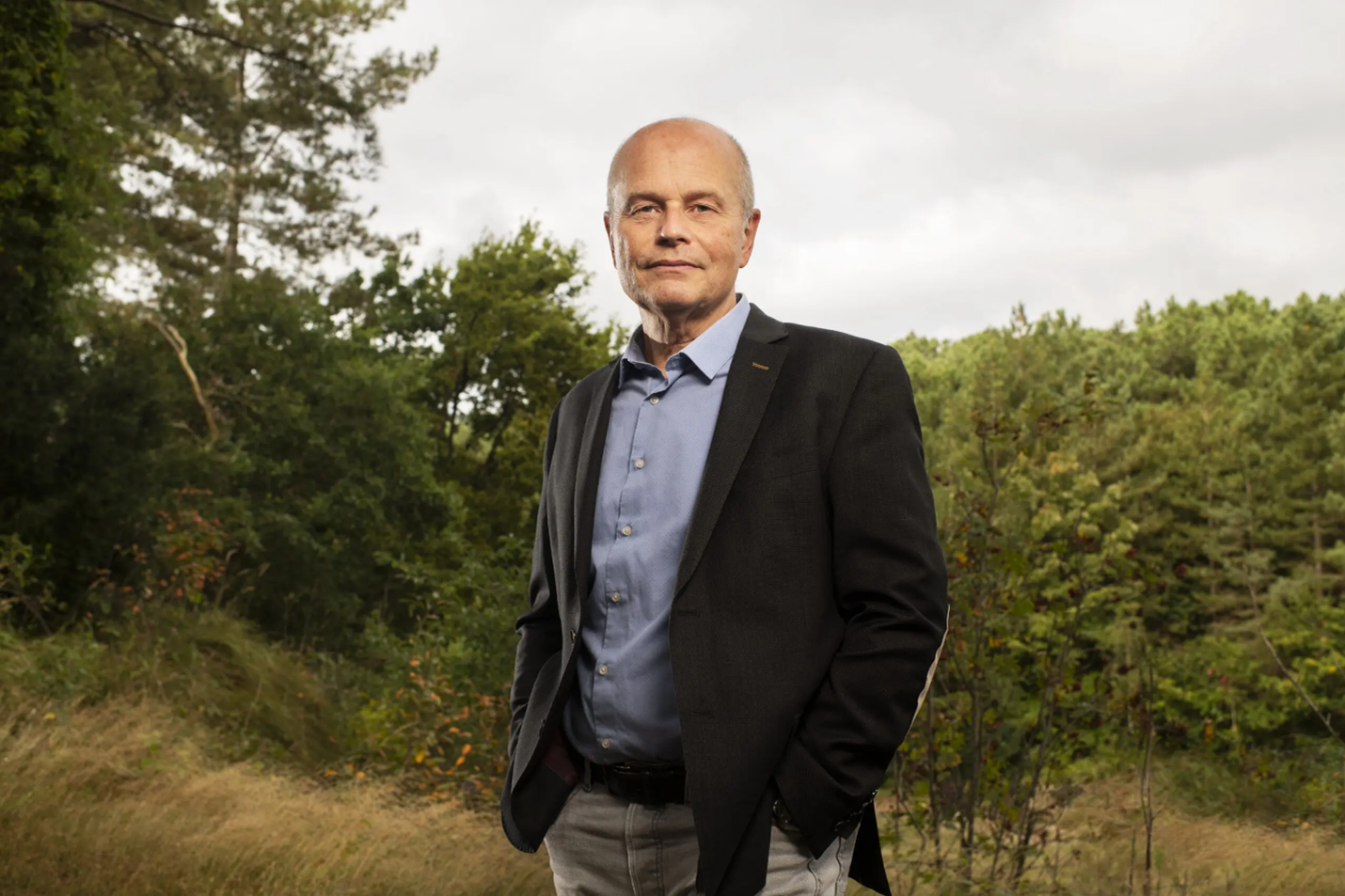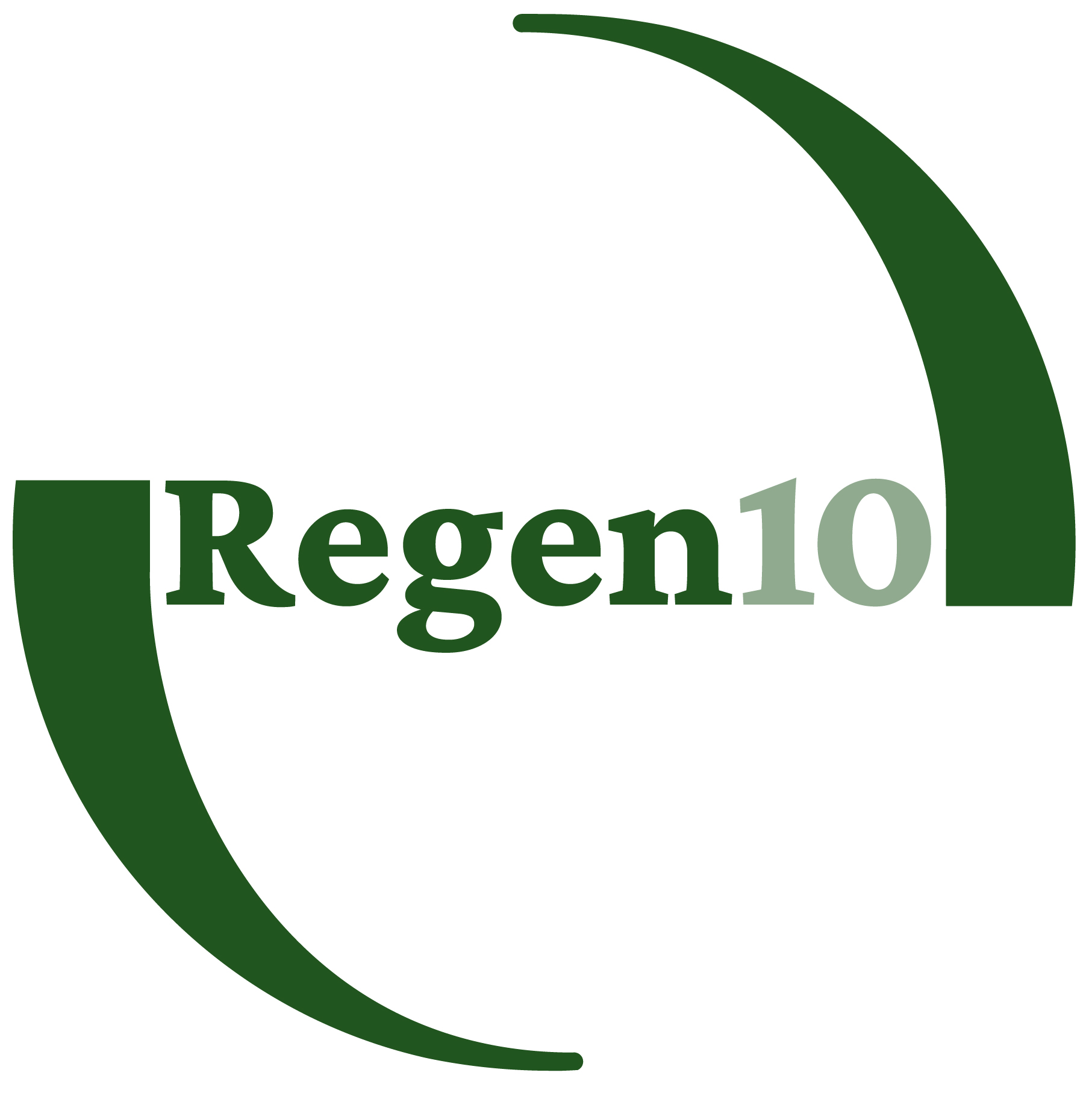How holistic landscape restoration can support regenerative approaches – An interview with Willem Ferwerda
10 December 2024
Willem Ferwerda is the founder of Commonland, a not-for-profit organization that brings people together to restore degraded landscapes and regenerate the Earth. He is also a member of Regen10’s High-Level Advisory Group, working to provide advice and insights into Regen10’s priority work areas and future strategy.
In this interview, Willem explains how Commonland’s 4 Returns Framework works, and the complementary elements between 4 Returns and Regen10’s Outcomes-Based Framework, which is currently being developed. He also talks about how outcomes-based approaches can address some of the challenges associated with regenerative agriculture.
How do outcomes-based frameworks enhance the effectiveness of landscape restoration projects?
Outcome-based frameworks, such as the 4 Returns Framework for holistic landscape restoration (HLR), are about creating a landscape vision by using a long-term co-creative process for landscape stakeholders. We take into account the socio-economic process and ecological realities and ensure that a restored landscape has impact through four (4) measurable inspirational, social, natural and economic/financial Returns.
Generally, a process of at least 20 years is needed to achieve this, and a landscape will need to be a minimum size of 100,000 hectares. The approach should be based on ecosystem and cultural characteristics to ensure we can effectively restore ecological functioning.
The 4 Returns Framework sets out a five-step approach:
- Bringing landscape stakeholders together to share, listen and learn about the losses of a degraded landscape.
- Working with them to co-create a landscape vision, using a language everyone can understand and use to talk about losses, risks and returns.
- Creating a landscape plan by setting an end goal and then working backwards from it to determine the necessary steps, strategies and resources.
- Beginning implementation with the right restorative actions within three interconnected zones identified by the framework: the natural zone, for natural forests, grasslands and other ecosystems, and nature restoration; the combined zone, where nature and agriculture are combined usually in the form of regenerative agriculture; and the economic zone, mostly urban or infrastructural production areas.
- Monitoring, measuring and learning through a clear set of generic and specific Key Performance Indicators (KPIs) per return. Importantly, the framework is flexible, so there is room for adaptive learning, and adjustments can be made when needed. Implementing actors are asked to continue working together in an open and shared environment to preserve accountability by using practical co-creation sessions based on Theory U processes.*
The 4 Returns Framework is a method for aligning key stakeholders at landscape scale to work concretely towards full integrated landscape management and restoration. Regen10’s framework, with its focus on outcomes, naturally falls into the combined zone described above, where agricultural production and biodiversity converge through regenerative agriculture. The Regen10 framework can, therefore, form a valuable part of the 4 Returns Landscape Framework, by providing additional outcome-based indicators for that combined zone.
*The Theory U processes were developed by the Presencing Institute, Massachusetts Institute of Technology (MIT)
How does Commonland address the challenges of scaling regenerative agriculture practices across different landscapes and regions?
Commonland sees regenerative agriculture as part of a holistic landscape restoration (HLR) approach. The basic principles of regenerative agriculture are the same everywhere: working with natural principles as much as possible to improve soil health, water retention, and biodiversity; and building climate resilience with local communities in the driving seat.
To help people understand landscapes, we support them to zoom in and out by dividing them into three zones: a natural zone (where nature is preserved, restored and areas are connected), a combined zone (where you combine biodiversity and agriculture) and an economic zone (industry, monocultural agriculture and urban areas).
Regenerative agriculture, including agroforestry and rotational grazing, is the main component of the combined zone within large areas that are being restored. We aim to transition the combined zone through a transformation from monocultural agriculture to regenerative agriculture. Making regenerative agriculture profitable within 5 to 10 years is one of the biggest challenges; it’s only possible if different public and private actors work together in the long term.
What are the main challenges in integrating regenerative agriculture into large-scale landscape restoration, and how can outcomes-based frameworks help address these challenges?
You can’t successfully “do” regenerative agriculture without zooming out and considering the entire landscape. In a degraded landscape, regenerative agriculture alone will also eventually fail. As a holistic framework based on landscape outcomes, 4 Returns includes regenerative agriculture as part of the HLR solution. The main challenges, besides the most important one – that markets undervalue nature – are:
- Lack of patience to establish profound stakeholder processes that build trust and create a shared landscape vision between local partners.
- Lack of local ecological knowledge.
- Tension between long-term versus short-term funding for farmers. For example, to address the “Valley of Death”, where operations have begun but revenue is not yet being generated for farmers in transition.
- Lack of long-term commitment from public funders and policy actors, including governments, and private funders/actors, the financial sector, philanthropy and agribusiness.
- The general belief that people are in charge and that technology should solve things, while technology should follow ecology.
How do you ensure that all stakeholders in a landscape-based partnership are aligned and equitably committed to both regenerative agriculture practices and desired outcomes?
We ensure this by aligning stakeholders first, rather than starting various isolated projects immediately. We have learned that it takes time and resources to build the trust needed to catalyze landscape restoration among a core group of stakeholders, which can later expand.
We bring these stakeholders together using this universal language that everyone understands. By using the language of the 4 Returns, which is supported by local leaders, and using a co-creation process – the Theory U method – we lay the foundation for successful landscape restoration in the long term. By focusing first on the process rather than immediate actions, we help people think about themselves within the landscape and its deeper history, considering the root causes of degradation, before finally diving into how they can work on long-term, systemic solutions.
Finally, the 4 Returns Framework helps them understand past losses and how people, businesses and governments can turn them into opportunities for action that have multiple returns. It also helps them identify where they can make changes, as the three landscape zones give them a firm sense of place.
Commonland assists these long-term processes through support, knowledge and funding. We have a timeframe of at least 20 years to support these transformation processes, with conservation, restoration, regeneration and social projects starting within one or two years.
What future trends do you foresee in the field of landscape restoration and regenerative agriculture?
There are a number of trends that we’re seeing, and these are sometimes contradictory:
- Globally, there is increased interest from the younger generations in holistic landscape and ecosystem restoration as part of their quest to find purpose-based, systemic solutions. It is a hopeful sign, as this will result in more bottom-up activities led by local communities.
- Companies within the fields of insurance, food, mining, water, and spatial planning are interested in holistic landscape restoration from a risk mitigation perspective, while chemical agribusinesses may see regenerative agriculture as a threat.
- However, whilst there is a lot of talk about holistic landscape restoration, only a limited number of people are actively engaging in doing it and funding it at this stage.
- More and more people are taking action and starting to work on conservation, regeneration and local, sustainable energy solutions. These processes are unstoppable and are often not led by large non-governmental organizations, but rather by regional or territorial initiatives often ecologically and culturally bonded, which connect people, projects and places; landscape ‘weavers’ or conveners. We are seeing more and more people engaging with the “bioregionalism” movement globally, in this vein.
- We are increasingly seeing that regenerative or sustainable forms of agriculture are not perceived as a stand-alone activity, but as part of a broader landscape approach.
- Simultaneously, we have also seen an increase in land degradation and seascape destruction – from deep sea mining, for example – and climate change effects having huge negative impacts on regions in the form of extreme weather like floods and droughts; so, the need for concerted investment into and implementation of holistic landscape restoration is ever-more urgent.
- A number of private funders and philanthropists see the need for a trust-based, long-term approach, but have not yet acted. We foresee the finance industry becoming increasingly interested in landscape restoration and regenerative agriculture.
- There is an ongoing debate that challenges the idea that humans are the center of the universe. A hopeful sign here is that indigenous thinking and knowledge is gaining more traction. However, we also see an increasing number of people who believe that we can solve everything with technology. While technology will play an important role, it should be seen as a tool to enable the ecological and sociological processes that drive holistic landscape restoration and increase its impact. It is not a silver bullet solution and we should be wary of those that promote technology as the sole way to solve climate change, biodiversity loss, and land degradation, among other interconnected issues.
- From a global policy perspective, the three Rio Conventions (UNCCD, UNFCCC and UNCBD) are aligning more closely in embracing holistic landscape restoration to realize the Paris Agreement’s Global Goal on Adaptation and the Global Biodiversity Framework.
- Ultimately, we are observing a trend towards working at landscape level among the public, private and NGO sector, as well as the recognition of the value of holistic landscape restoration within the global adaptation agenda. The barriers we will need to break down are a lack of long-term financing, bottom-up stakeholder engagement and time among key stakeholders, and the resistance among the private sector to move from shareholder to stakeholder value.
——–
Learn more about the 4 Returns Framework and the impact of landscape weavers for community-building and restoration work.
